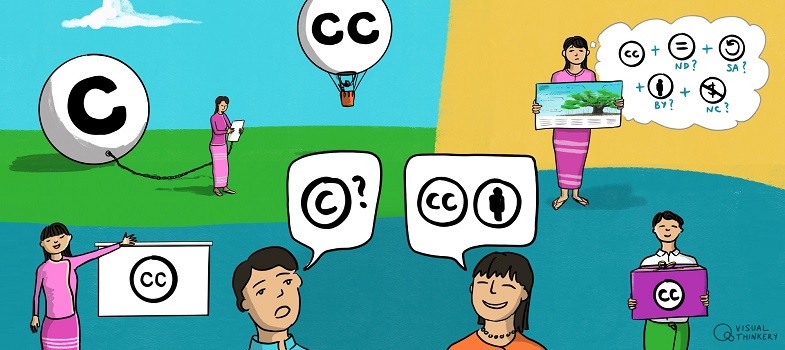The purpose of copyright
There are two primary rationales for copyright law (although rationales do vary among legal traditions):
- Utilitarian: Copyright is designed to provide an incentive to creators. The aim is to encourage the creation of new works.
- Author’s rights: Copyright is primarily intended to ensure attribution for authors and preserve the integrity of creative works. The aim is to recognise and protect the deep connection that authors have with their creative works. (Learn more about author’s rights in the additional resources [Tip: hold Ctrl and click a link to open it in a new tab. (Hide tip)] section.)
While different legal systems identify more strongly with one or the other of these rationales, or have other rationales particular to their legal traditions, many copyright systems (including Myanmar’s) are influenced by and draw from both.
Reflection
Do one or both of these rationales for copyright law resonate with you? What other reasons do you believe support or don’t support granting exclusive rights to creators of original works?
Drawing on the author’s rights tradition, most countries have moral rights that protect, sometimes indefinitely, the bond between an author and their creative output. Moral rights are distinct from the rights granted to copyright holders to restrict others from economically exploiting their works, but they are closely connected.
The two most common types of moral rights are:
- the right to be recognised as the author of the work, traditionally known as the ‘right of paternity’
- the right to protect the work’s integrity, which generally means the right to object to distortion of the work, or the introduction of undesired changes.
Myanmar’s new Copyright Act includes moral rights for creators. Not all countries have moral rights, but in some parts of the world they are considered so integral that they cannot be licensed away or waived by creators, and they last indefinitely. We will find out more about moral rights in Section 1.2.
A simple history of copyright
